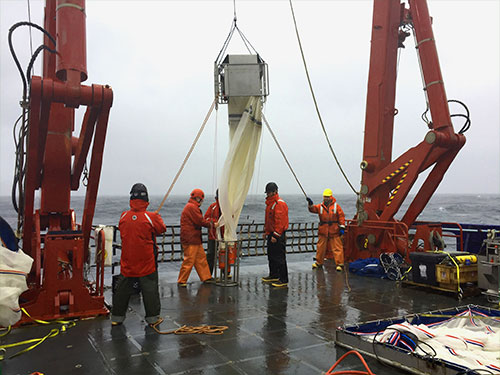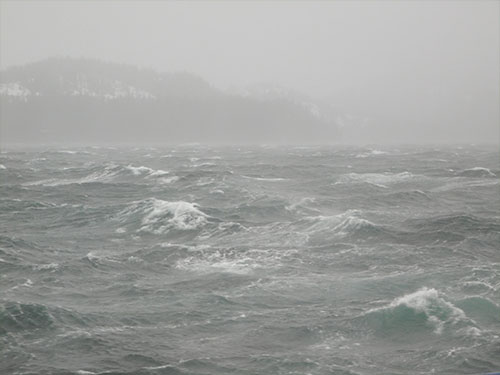
Part 4: Sikuliaq researchers find odd, abundant animal-plant planktonBy LAUREN FRISCH
August 20, 2018
This is the final story in a four-part series highlighting the main research groups that participated in the May 2018 expedition.
Imagine you are on a rocking ship out in the Gulf of Alaska attempting to capture your ultimate research nemesis: the single-celled protist. Equipped with a microscope and a glass tube that is drawn out to a fine point at the end, you chase this cell around a small container of seawater. The motion from the boat is not working in your favor. But eventually, you are able to capture the cell and transfer it to a well plate, a flat plate with lots of small holes that can hold tiny samples in a bit of filtered seawater. Since you really just want to study this one protist, you need to rinse it off, small as it is, to make sure it’s not surrounded by other organisms along for the ride. Then it’s back to square one: you need to capture your protist again before finally storing it in a small amount of water and fixative. The ability to conduct this procedure on a ship like Sikuliaq, to isolate these cells and preserve them quickly after they have come out of the ocean, allows researchers like Western Washington University’s Suzanne Strom to make some pretty radical observations about life at the bottom of the food web in the Gulf of Alaska. In planktonic communities, both the producers and the primary consumers are mainly single-celled protists. Strom was particularly interested in focusing on a group of protists that have figured out how to both make their own food and successfully eat and digest their friends and neighbors. Researchers are calling them mixotrophs. Because of this flexible eating structure, mixotrophs are likely to be more resilient when food is scarce or weather is dark or cloudy, which means that animals higher up in the food chain are likely to have a more stable food source, even if environmental conditions are fluctuating. Phytoplankton are the protists that make up the base of the food chain. They use chloroplasts — specialized compartments containing high amounts of chlorophyll — to photosynthesize and make their food out of carbon dioxide. Mixotrophic protists such as ciliates consume phytoplankton and then are able to retain the chloroplast of the phytoplankton for days to weeks. The mixotrophs use these stolen chloroplasts to photosynthesize on their own. Other mixotrophs such as dinoflagellates manufacture their own chloroplasts, but can also eat other cells.
“They eat and they photosynthesize,” Strom said. “All of this is happening in a single cell. We’re pretty jazzed about that.” Strom was excited to look for mixotrophs in the northern Pacific Ocean when they were discovered in other oceans around the world. “But I had no idea how abundant they would be,” she said. In-depth analysis of these odd but abundant animal-plants was possible because of extensive lab space available to set up microscopes and other equipment on Sikuliaq. Ciliates and dinoflagellates are the major consumers of phytoplankton in the Gulf of Alaska, Strom said, and most appear to be mixotrophs. Their nutritional flexibility has huge implications for the way nutrients and energy are stored and transferred in the ocean. They are also likely to be more resilient to rapidly changing environmental conditions. “It’s a great survival strategy to be able to photosynthesize when food is scarce,” Strom said. “But it’s also useful not to have to rely on that when weather is stormy and cloudy, as is quite common in the Gulf of Alaska.” In the early spring, ciliates are the primary mixotrophs that Strom’s team can study. The team was able to use microscopes on the ship to isolate and preserve green ciliates (which have eaten and retained chloroplasts) as well as non-photosynthetic ones. The preserved ciliates will be used for more extensive analyses back onshore. Some important questions remain, such as what types of protists provide the chloroplasts that mixotrophs use, how the mixotrophs are able to retain the chloroplasts, and for how long an individual chloroplast is useful. Strom’s group plans to estimate how important these protists are to overall production in the region, and study how they respond to variability in the environment.
On The Web:
Representations of fact and opinions in comments posted are solely those of the individual posters and do not represent the opinions of Sitnews.
|
|||||

